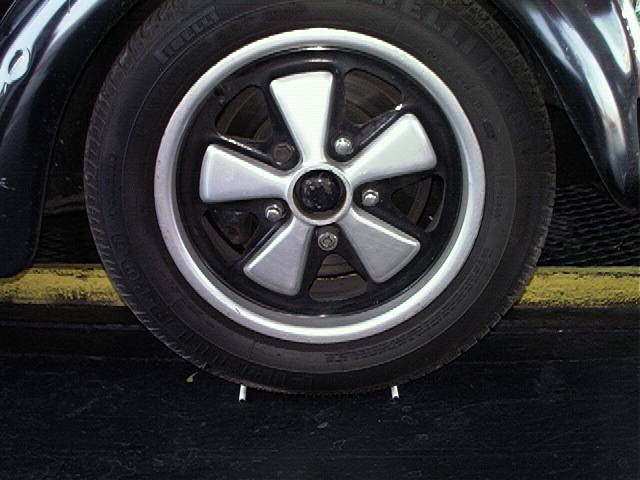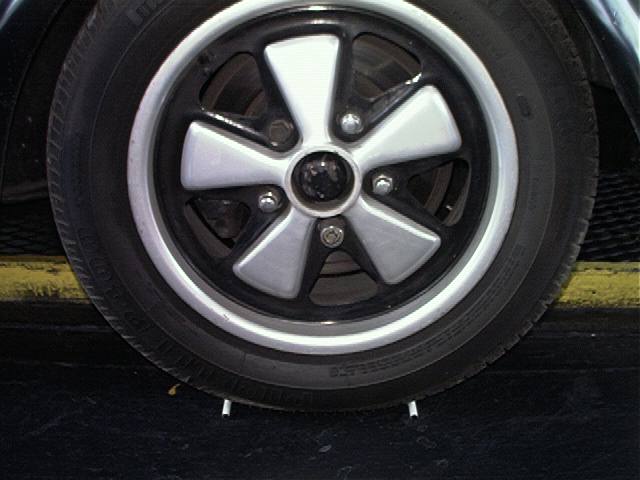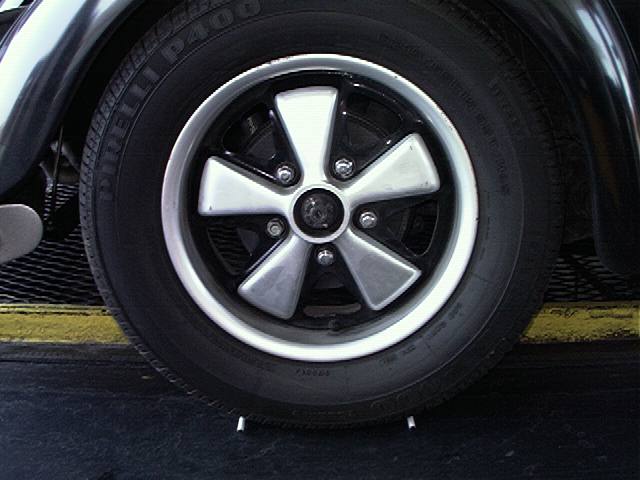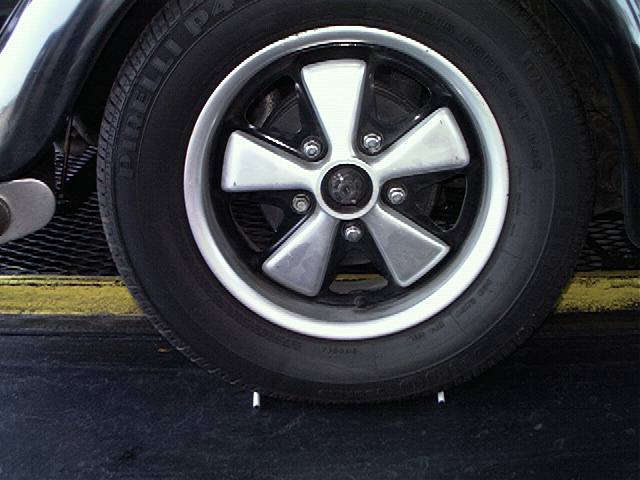Tire Pressure
How Much is Enough?
Just about every car you come across in the average day, has the wrong amount of air pressure in it's tires. How do I know? Because just about everyone sets thier tire pressure to 35 psi. Even for most modern cars, this is too much. Too much tire pressure, and it will feel a bit squirelly. This is due tothe smaller 'contact patch' on the road surface. You will slide easier, resulting in larger stopping distances, understeer, and overall, makes your car dangerous in emergency situations. Too little air, and the sidewalls get 'squishy', and make your car feel 'sloppy'. And again, makes your car dangerous in emergency situations.
How Much Does My Tire Need?
"I need 35 psi, because my tires say so". or, the number can be 44psi, or 50 psi for big truck tires, and so on and so forth. To look at your tires, and say, "Yep, it says that 35 is the max pressure, that's what I set it to.", is just plain wrong. Do NOT do this. If your tire says "35 max pressure", then that is exactly what it says. A MAXIMUM amount of pressure the tire can hold. But continue reading your tire. It also has a MAX weight rating also. Your tire can hold "X" amount of weight. Your tire can hold "Y" amount of air pressure. What does this mean? Your tire is rated to hold "X" amount of weight, with "Y" amount of air pressure. This is a ratio. But, also, if you notice in the 'fine' print on your tire, it tells you to set your tire pressure to that which is specified in the owner's manual, or the door placard. So which is right? Treat the tire pressure as a ratio, or go by the owner's manual? Acually, BOTH are. Your owner's manual or door placard is specifying a certian tire size. If you are running stock size tires, with the same rating, then go by your door sticker. If you are running different size tires, or tires with different ratings than stock, use the ratio formula to figure out your tire pressure. Do not go by your owner's manual for tire pressure, if you have changed your tires from stock setting.
What is the Ratio Formula?
Okay, so you're running different size tires than stock. What's your new tire pressure supposed to be? To figure that out, you need to figure how much weight is on each tire. Some states that have saftey inspection, will give you an exact amount of weight that is on each tire. I did this on my bus, and it worked out great. Sometimes you can find a public scale. As for bug's, if you cant weight your car and find out how much weight is on each axle, use this super simple formula. A bug weighs 1800 lbs. with the 60/40 split in weight, that gives you 1080lbs on your rear axle, and 720lbs on your front axle. Then you divide that in half to figure out how much weight is on each axle. 540lbs on each rear wheel, and 360lbs on each front wheel. With these figures in hand, you can now figure out your tire pressure. Take the actual weight on your tire, divided by the max. weight rating on your tire, multiplied by the max pressure rating on your tire. Or, to make it easier, Lets call the weight on your tire "A", the max weight rating of your tire "B", and the max pressure setting on your tire "C".
A/B*C= Correct pressure setting.
The Pirelli's on my bug ended up with a number of 12psi. This seems really low, doesnt it? It rides smooth, the tires dont look flat, and all the little rubber 'nipple' things on the tires wore off at the same rate, the whole way across the tread of my tires. But 12psi? that seems low. Did I really set it that low? No I didn't. I actually put them up to 14psi. Why? Because the figures I used to figure out the weight was the weight of a 'dry' bug. No gas, no passengers, hell, not even a driver. To make up for those variables, I added a couple pounds of air.
See What It Looks Like
Okay, I took my camera to work, and set my tires to different levels to let everyone see the difference in pressure. To help show the difference in contact patch, I put some white pens and pushed them along each side of the tread. The three pictures I took were of three different pressures. My tires have a max pressure of 35 psi, so I took a pic of them at 35 psi. VW specifies for stock tires, that 17/24 is the way to go, so, I took pic's of my tires at 17 and 24 psi. Then finally, I took pics of my tires set at the pressure that the tire pressure formula brings it to. they both came to about 12 psi. As you can see in the pictures, there isn't much difference in contact patch between the max pressure, and the vw recommended pressure. But when dropped to where the formula comes out to, you can see the difference. My car handles so much better with the pressure set to the formula results, that it's not even funny. Try it on your car, and see what happends. You may be plesantly suprised.



Front tire at 35 psi
Front tire at 17 psi
Front tire at 12 psi



Rear tire at 12 psi
Rear tire at 24 psi
Rear tire at 35 psi
